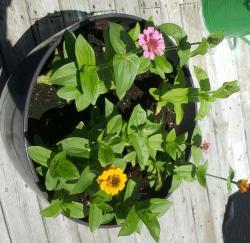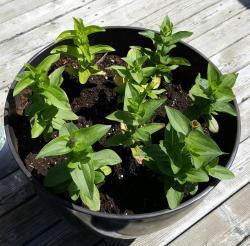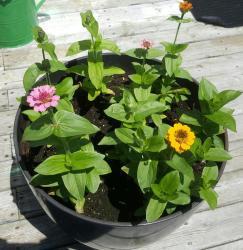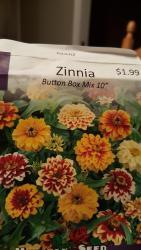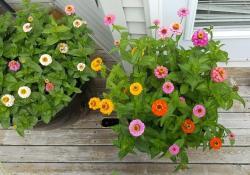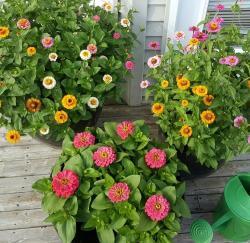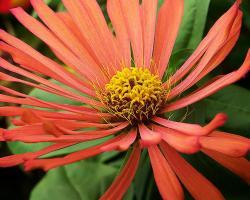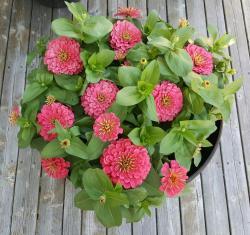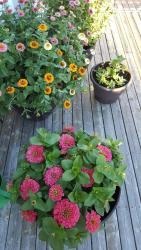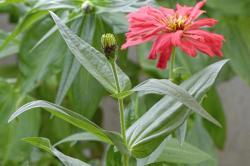Hi John,
Congratulations on your success with Button Box and Magellan in containers. It is unfortunate that slugs and earwigs are making it unfeasible to grow zinnias in your garden. The product called Sluggo is a safe bait that can control slugs.
A few years ago when we lived in Maine, earwigs devastated my zinnias. I had mulched them with 2 or 3 inches of composted leaves and I discovered that the compost was protecting a huge population of earwigs. I didn't see them during the day, but I went out with a flashlight after dark and was shocked to see all of my zinnia blooms literally covered with earwigs.
I suspected that they were hiding in the mulch during the days, so the next day I moved some of the mulch back and confirmed that the mulch was home to a virtual population explosion of earwigs. I removed the mulch and put the mulch/earwig mix on the bottom of a new compost pile and mulched my zinnia bed with about an inch and a half of sand.
The sand was inhospitable to the earwigs and slugs, and even caused the death of a population of pill bugs. (A large population of pill bugs can do damage.) Apparently pill bugs and earwigs can't live in sand, and slugs avoid it because it sticks to their slimy parts.
If you want to take your garden back from the slugs and earwigs, get someone to deliver a load of sand to your place, and mulch your garden with and inch or two of sand. Over the years I have used several loads of washed river sand here on my garden in east Kansas. I also use the sand as a soil amendment to our silty clay soil, which converts a dark sticky mess into a good approximation of sandy loam, which zinnias and many other plants love. I grow and breed zinnias as a hobby. This is a picture of one of my recent home hybridized zinnias. It has an interesting picotee effect.

ZM
(not associated with any product or vendor mentioned)
